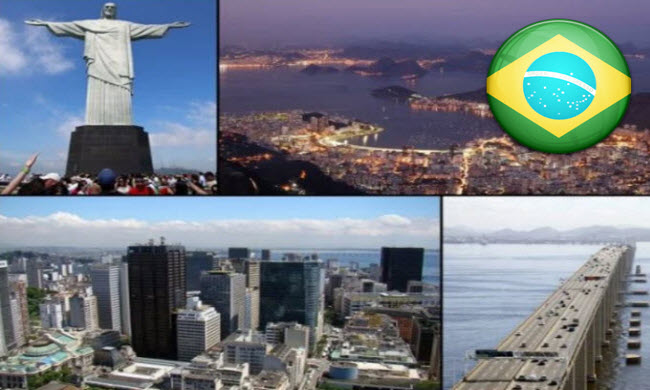Brazil, officially the Federative Republic of Brazil, is the largest country in both South America and Latin America. Known for its diverse culture, rich biodiversity, and vibrant cities, Brazil has a rapidly growing economy and plays a significant role on the global stage.
Geography
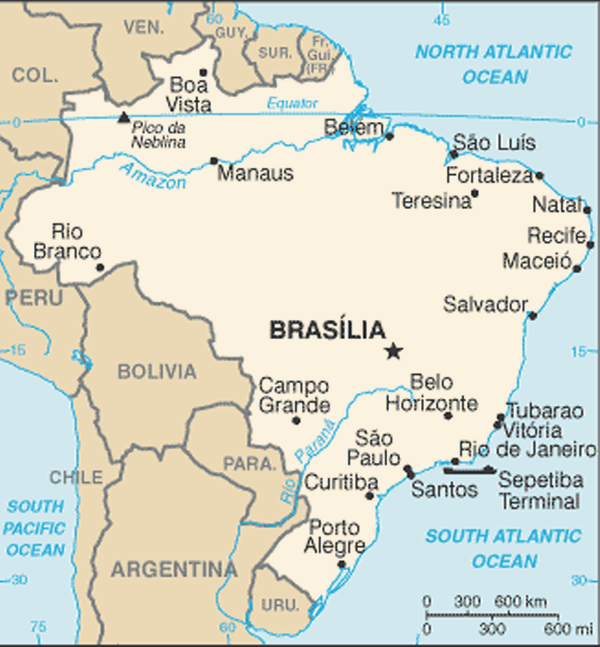
- Location: South America, bordered by the Atlantic Ocean to the east. It shares land borders with every South American country except Chile and Ecuador.
- Coordinates: Approximately 10.4515° S, 55.1642° W.
- Area: Approximately 8,515,767 square kilometers.
- Borders:
- Argentina, Bolivia, Colombia, Guyana, Paraguay, Peru, Suriname, Uruguay, Venezuela.
- Climate:
- The climate ranges from tropical in the north to temperate in the south. It includes the Amazon rainforest’s tropical climate, semi-arid regions in the northeast, and temperate zones in the southern parts.
- Terrain:
- Features include the Amazon rainforest, Pantanal wetlands, vast river systems (like the Amazon River), highlands, and coastal plains.
- Elevation:
- The lowest point is the Atlantic Ocean (0 m), and the highest point is Pico da Neblina (2,995 m).
- Natural Resources:
- Includes iron ore, oil, bauxite, gold, and timber. Brazil is also known for its rich biodiversity and vast agricultural resources.
- Land Use:
- Arable land: approximately 10.1%, permanent crops: 1.7%, other: 88.2%.
- Population Distribution:
- The majority of the population lives in coastal cities and the southeastern region, with major urban centers like São Paulo, Rio de Janeiro, and Salvador.
Population and Society
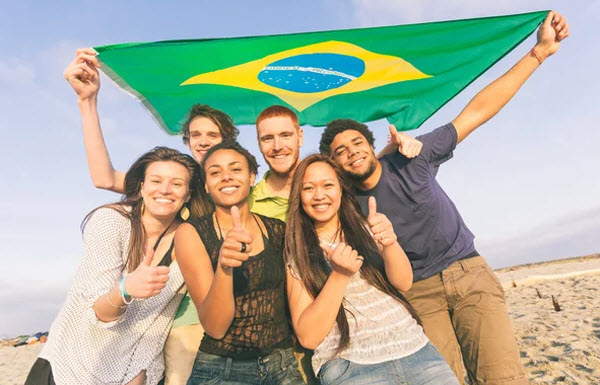
- Population: Approximately 213 million (estimate for 2024).
- Ethnic Groups:
- Diverse ethnic composition including people of European, African, and Indigenous descent, along with mixed-race populations.
- Languages:
- The official language is Portuguese.
- Religions:
- Predominantly Roman Catholic, with significant Protestant, Spiritist, and Afro-Brazilian religious communities.
- Age Structure:
- Brazil has a relatively young population with a growing proportion of older adults.
- Population Growth Rate:
- Approximately 0.8% per year.
Country
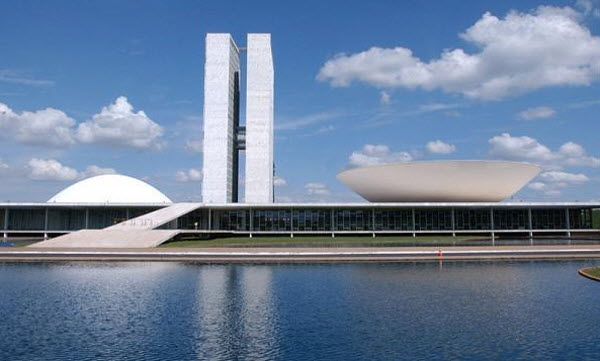
- Country Name: Federative Republic of Brazil
- Common Name: Brazil
- Origin of Name: The name “Brazil” comes from the Portuguese word for the brazilwood tree, “pau-brasil,” which was abundant in the country during the early colonial period.
- Type of Government: Federal presidential constitutional republic.
- Capital: Brasília
- Origin of Capital Name: Brasília was specifically designed and built to serve as the capital; the name is derived from the country’s name.
- Local Time: Brasília Time (BRT) (UTC-3:00), with variations for other time zones.
- Daylight Saving Time: Not observed.
- Administrative Divisions: 26 states and 1 Federal District.
- Dependent Areas: Includes some overseas territories like the South Sandwich Islands (administered by the UK).
- Independence: Gained independence from Portugal on September 7, 1822.
- Citizenship Acquisition: By birth, descent, or naturalization.
- Legal System: Based on Roman-Germanic legal tradition.
- Executive Branch: The President is both the head of state and government.
- Legislative Branch: Bicameral National Congress consisting of the Federal Senate and the Chamber of Deputies.
- Judicial Branch: The Supreme Federal Court is the highest court.
- Political Parties: Includes major parties such as the Workers’ Party (PT), Brazilian Social Democracy Party (PSDB), and the Brazilian Democratic Movement (MDB).
- Flag Description: A green field with a yellow diamond and a blue globe with 27 white stars arranged as the night sky over Rio de Janeiro, including the Southern Cross constellation.
- Country Code: BRA
Economy
- GDP: Approximately 2 trillion USD.
- Agricultural and Animal Products: Soybeans, coffee, sugarcane, beef, and poultry.
- Industries: Agriculture, mining, manufacturing, energy, and services.
- Budget: The budget includes substantial expenditures on social programs, infrastructure, and debt servicing.
- Exports: Soybeans, iron ore, oil, and automobiles.
- Imports: Machinery, electronics, chemical products, and oil.
- Foreign Reserves: Approximately 350 billion USD.
- External Debt: Approximately 800 billion USD.
- Local Currency: Brazilian Real (BRL).
Communications
- Fixed Lines: Approximately 40 million lines.
- Mobile Lines: Approximately 250 million lines.
- Country Code: +55
- Broadcast Media: Includes major networks like Globo, Record, and SBT, as well as numerous radio stations.
- Internet Code: .br
- Internet Users: Approximately 85 million people.
Transport
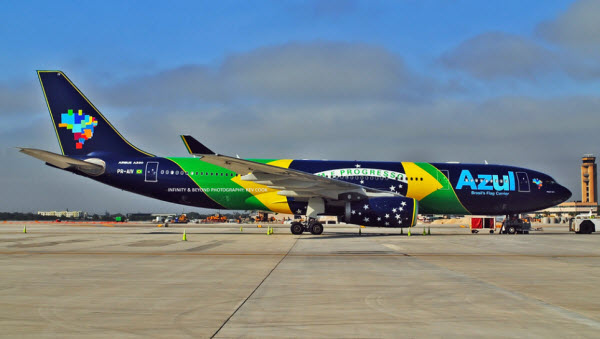
- National Air Transport System: Includes a well-developed network of international and domestic flights.
- Airports: More than 400 airports.
- Heliports: Limited, mostly in major cities.
- Pipelines: Includes pipelines for oil and gas.
- Railways: Network mainly focused on cargo transport.
- Road Network: Extensive network of highways and roads totaling over 1.7 million kilometers.
- Ports: Major ports include Santos, Rio de Janeiro, and Salvador.
Military
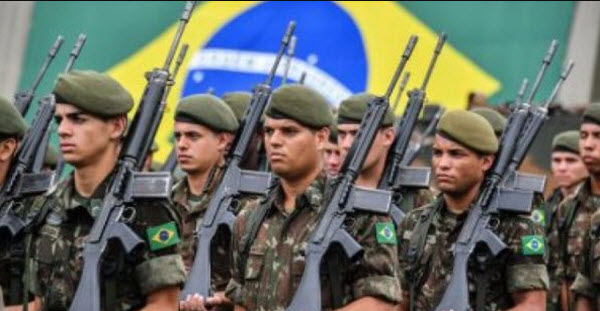
- Military Composition: Includes the Brazilian Army, Navy, and Air Force.
- Military Expenditures: Approximately 30 billion USD per year.
- Personnel in Military and Security Services: Approximately 370,000 active members.
- Military Equipment: Includes modern aircraft, naval vessels, and armored vehicles.
- Military Service Age: Voluntary enlistment with no mandatory service requirement.
